Are you fed up with spending all your free time weeding in your garden, only to have the area you weeded be full of weeds three days later? Would you like to be able to deal with the weeds once, with minimal upkeep for the rest of the season? Do you hate the thought of spraying harsh chemicals everywhere?
Here’s how to get rid of most of those weeds, and take back your summer!
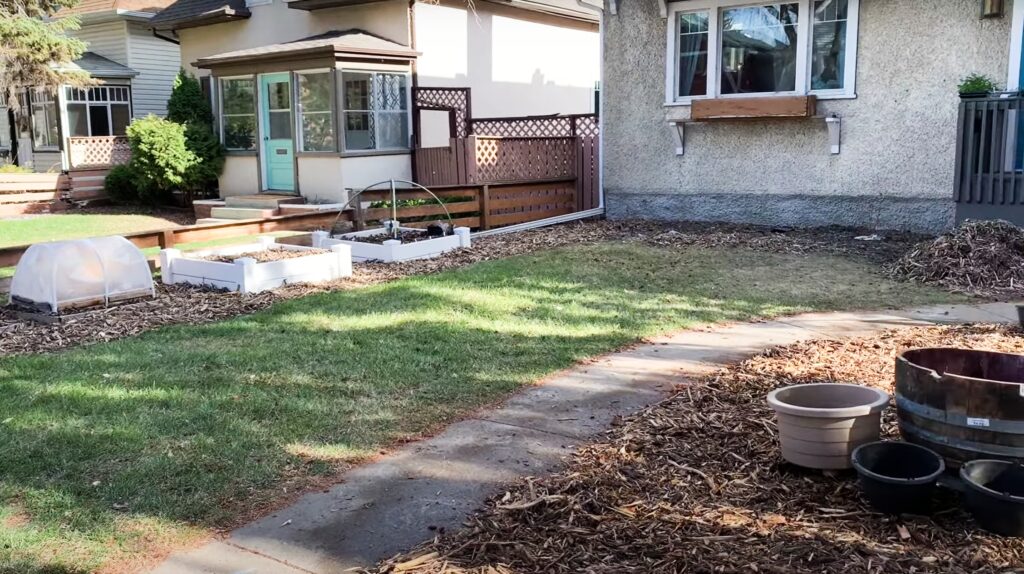
This post contains affiliate links, which means if you purchase anything, I earn a bit of extra coffee money at no cost to you. Thanks for supporting Shifting Roots!
Four Ways to Get Rid of Weeds
There are generally four ways to get rid of weeds: spray them with chemicals, spray them with a natural solution that usually doesn’t work that well, pick them for an eternity, or suffocate them.
The fifth option is to accept the weeds as your new overlord and use the useful ones in salads, herbal teas, and salves. I am not that kind of garden blogger, but there are lots of lovely ones on the internet who can steer you in that direction if that sounds like something you’d prefer!
In my experience gardening, I’ve tried all four methods of weed removal, and the way I like the best and feel is the most efficient is to suffocate them. Best of all, it’s easy, requires little maintenance, and the equipment can be found for free or low-cost.*
*It can also be expensive, but it doesn’t have to be… more on that later.
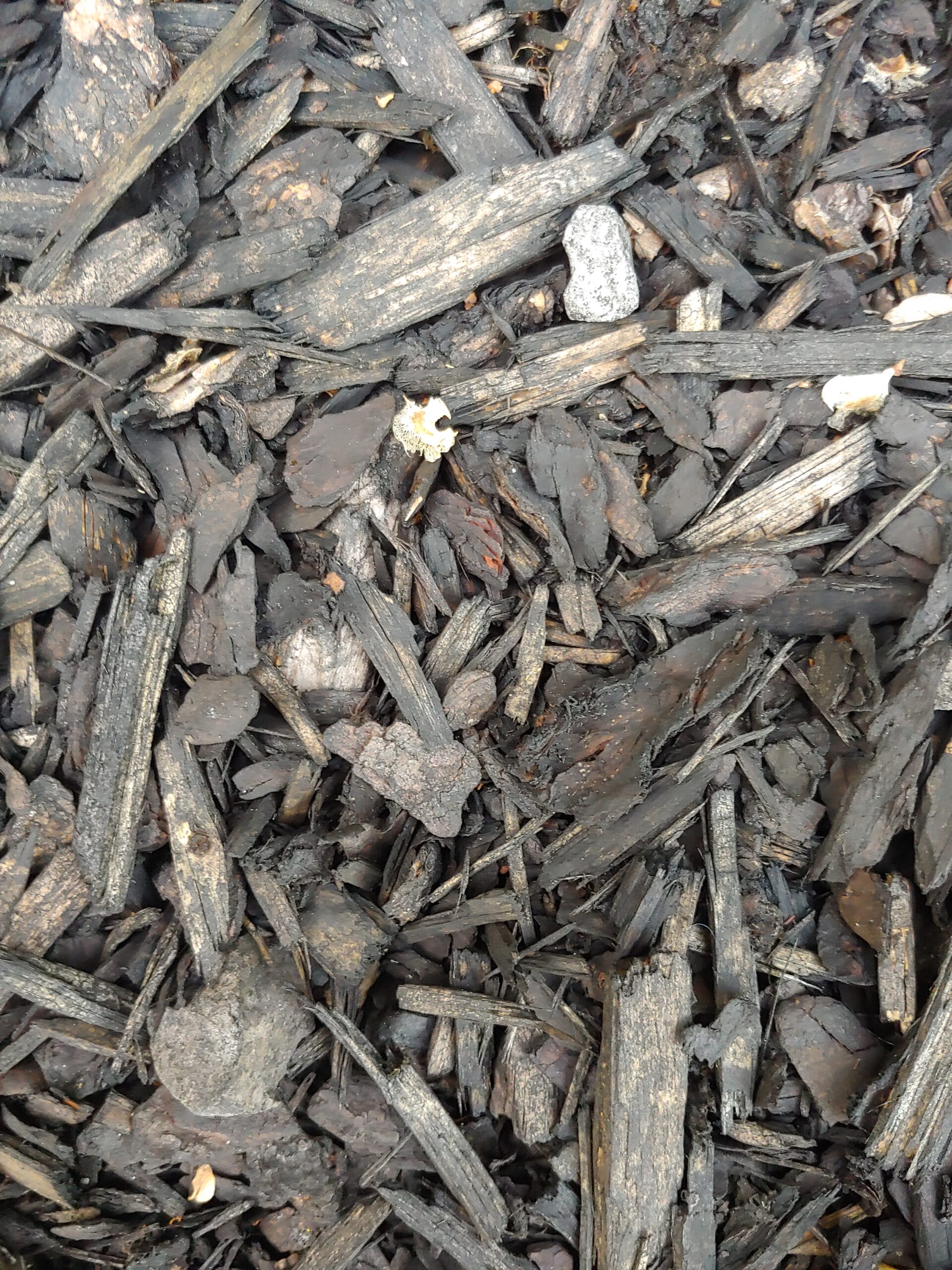
Want to feel better about the weeds in your yard? See the overgrown mess I started with, and how it looks now.
Use Mulch to Save Time and Effort in the Garden
Mulch is a material that is placed around a plant to enrich or protect the soil. In other words, gardeners put down mulch to suffocate weeds, retain moisture in the soil, and depending on the mulch type, add nutrients back into the soil.
If you’re using mulch in the vegetable garden, wait until the plants are a few inches high so you don’t accidentally suffocate them.
Once the mulch is applied, any weeds that manage to creep through or grow on top will be extremely easy to pull out. Instead of weeding for hours on end every week, you’ll be able to weed for 5 minutes once a month, if that.
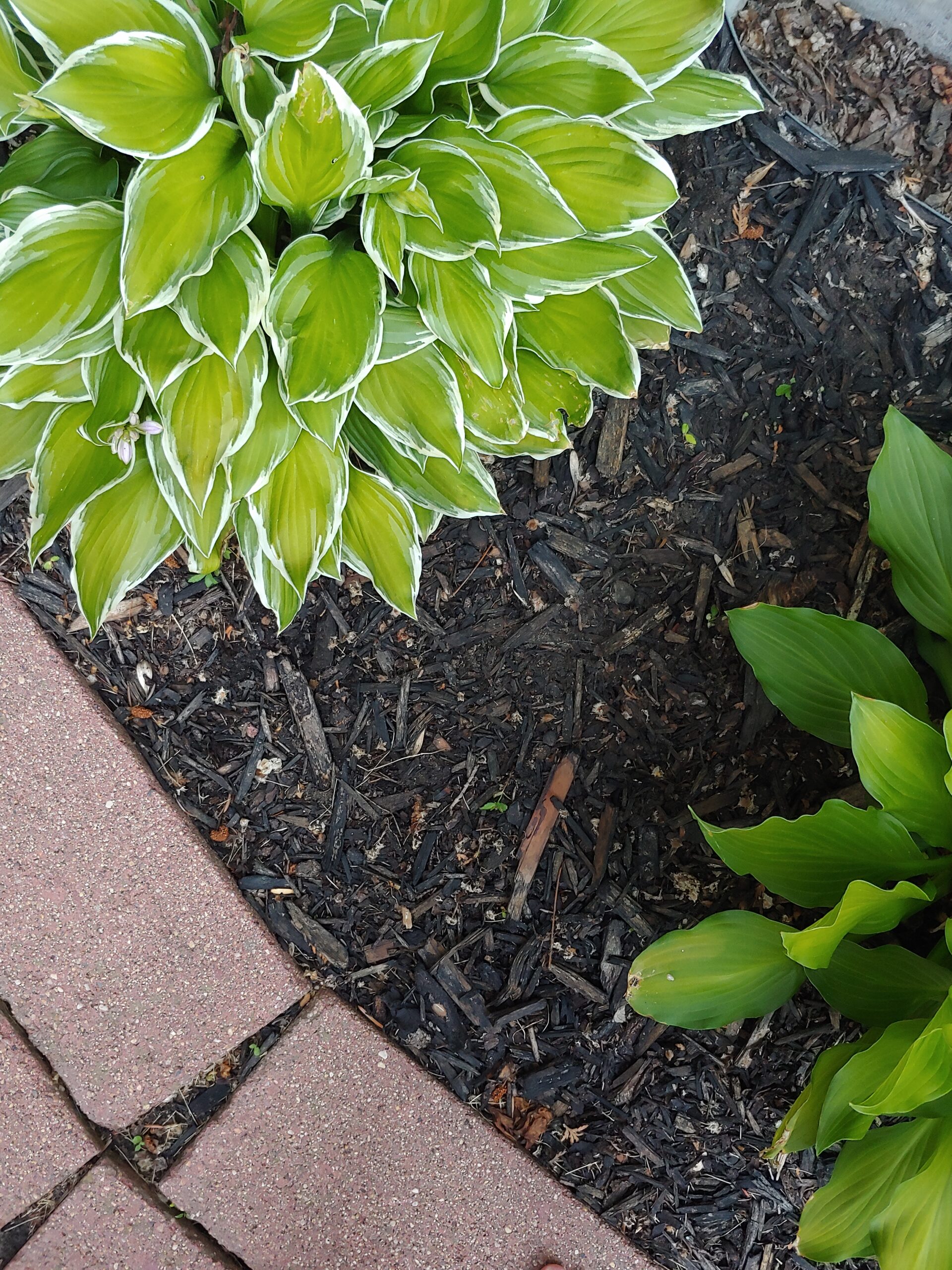
Related: How to Tell the Difference Between Weeds and Plants in the Garden
Multiple Types of Mulch
When you think of what mulch is, likely coloured wood chips come to mind. But mulch can be so much more!
You can use:
- grass clippings
- straw
- leaves
- compost
- newspaper
- wood chips
- coloured or natural shredded wood
- rubber chips
- stones
Each of these mulches has its own pros and cons. For use in your vegetable garden, I recommend grass clippings (as long as they’re fairly weed-free), leaves, compost, newspaper with no colour, and any natural wood chip product that is not painted or dyed. If you are planning a landscaping project, you can use whatever product you like.
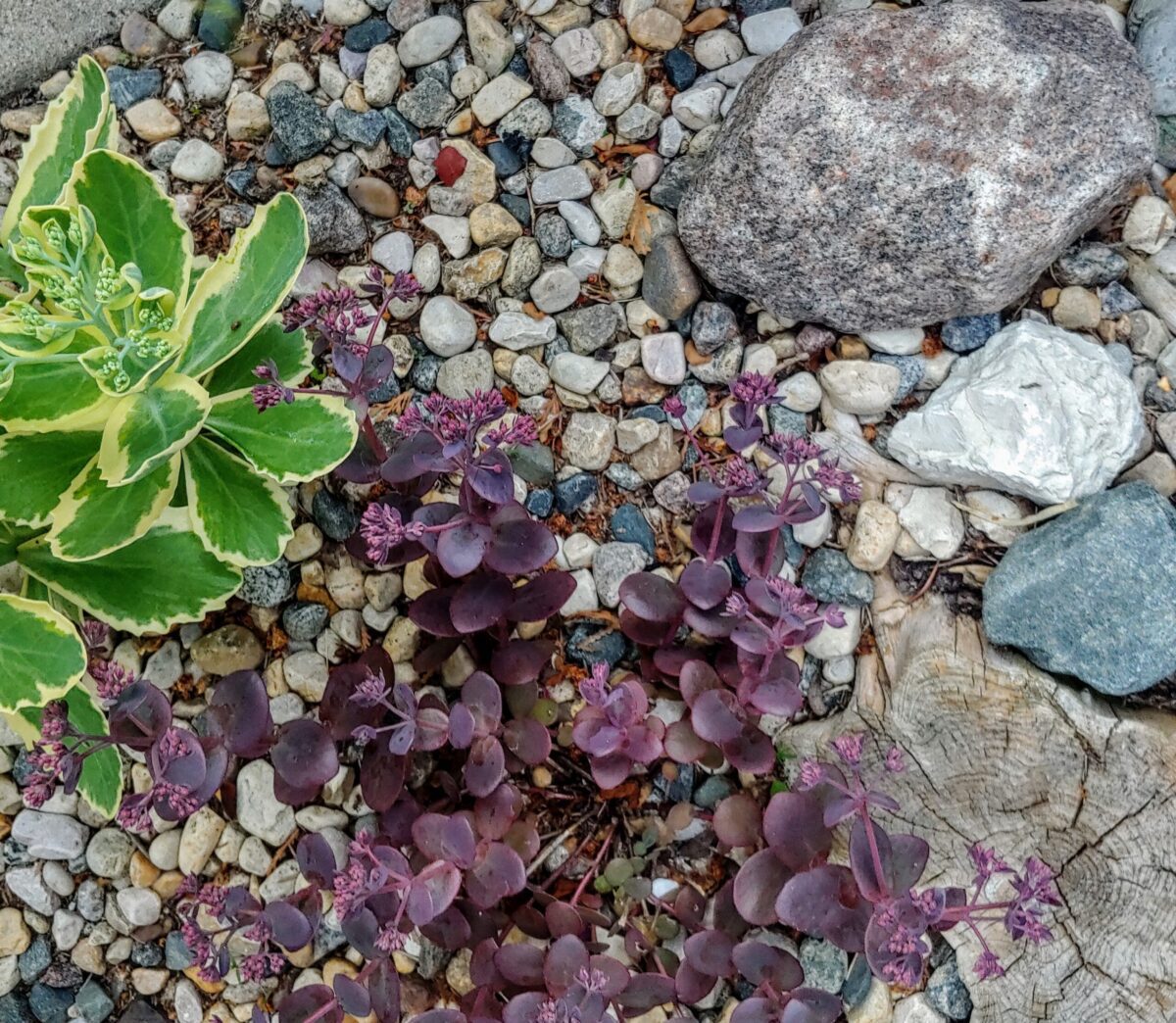
If you learn best from watching, check out the video below to see how we laid down our mulch in the front yard of our Saskatoon house:
step-by-step instructions for laying mulch
1. Pick a Mulch Barrier
To lay down mulch, you must first choose your barrier. There are three barriers that you can use:
- landscape fabric
- cardboard
- newspaper
You do not have to get rid of the weeds or grass first in the area you want to mulch if you’re creating a pathway. However, it is helpful and you definitely should get rid of any weeds if you’re mulching around your vegetables.
Cardboard and newspaper are both effective, free, and will decompose into the soil–perfect for the vegetable garden!
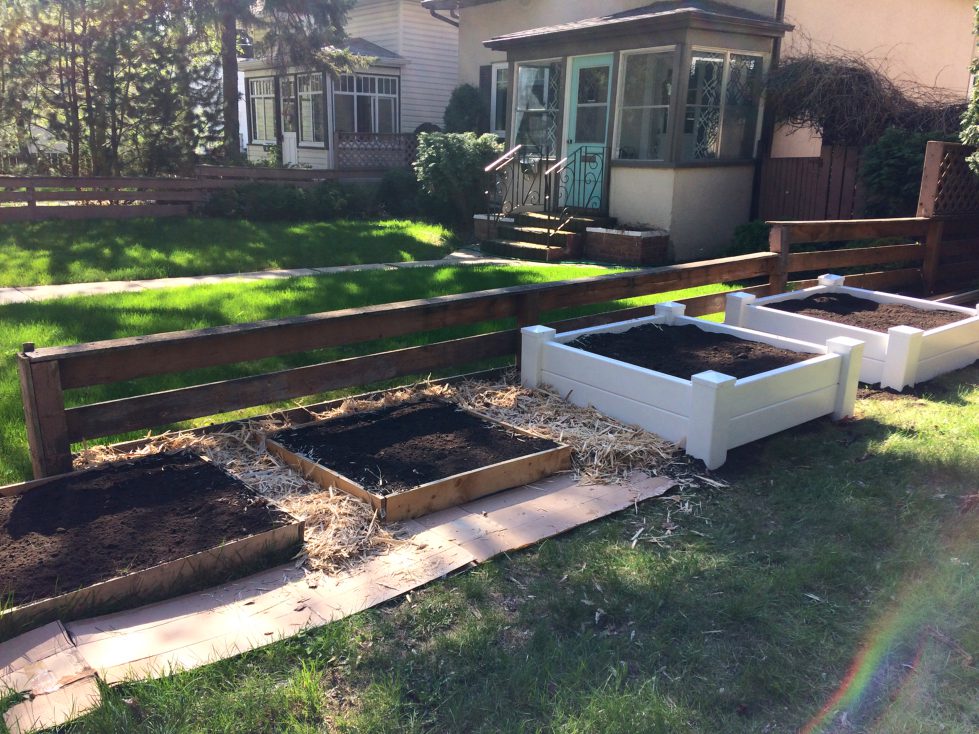
2. Lay Down the Barrier
Using newspaper? Use at least six stacked sheets of newspaper and make sure the ends overlap. Water down the area and cover with a light layer of compost, soil, or other heavier mulch to keep the newspaper from flying away.
Using cardboard? Remove all tape and staples and make sure your ends overlap. Cover with another mulch. In the photo below, we used natural wood chips. I loved the result and the area remained virtually weed-free all season long.
Using landscape fabric? You get what you pay for, so use the highest quality fabric you can afford. Landscape fabric is a pain to dig out and replace if you change your mind.
I much prefer the other two methods so I can easily change things up or just layer a bit more mulch each year to keep the weeds at bay!
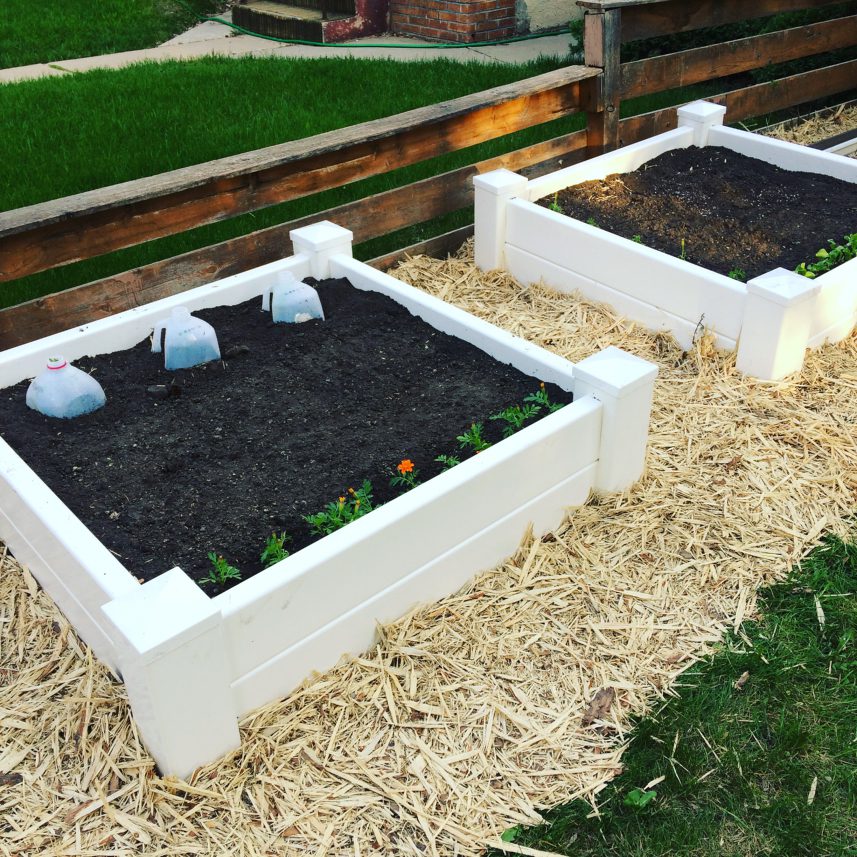
Falling in love with my vinyl raised garden beds? Get yours here!
3. Lay Down the Mulch!
Not sure how much to use? Here’s a handy guide! From my own experience, I recommend using at least four inches. Anything less and weeds will be poking through in a month. Yes, there are still a few weeds that manage to poke their way through, even with four inches of mulch. However, they are super easy to pull and will be suffocated more when you add a new layer of mulch the following year!
NOTE: The year I bought mulch in bags, I was disappointed with how little an area I could cover with one bag. I cheaped out and spread my mulch out to two inches only to have all my weeds and nuisance ferns pop right back out a few weeks later! However, mulch doesn’t have to cost an arm and a leg.

Related: From Weed Jungle to Backyard Paradise: Get Rid of Weeds Fast!
Get 4 Free Square Foot Gardening Templates

Start your square foot garden the easy way!
You'll get 4 4x4 plans for
- Salad Garden
- Beginner's Garden
- Salsa Garden
- Kid's Garden
Plus a mini email course that gives you short, actionable tips for keeping your garden alive.
How to Save Money on Mulch
Landscaping fabric and bags of mulch from the store can quickly add up. Save money by using newsprint or cardboard as your first barrier. If you don’t have any lying around, grocery stores will often give you boxes for free. Make a quick call to a friend or post on Kijiji, and you’d easily have enough people offering you their old newspapers.
Grass clippings and leaves are free, and many people would be willing to give you theirs if you don’t have a lawn or trees.
Tree removal companies often offer shredded wood mulch for free or low-cost. Just call ahead for a pickup time. Some will even deliver to your door if they have a tree removal scheduled for your neighbourhood.
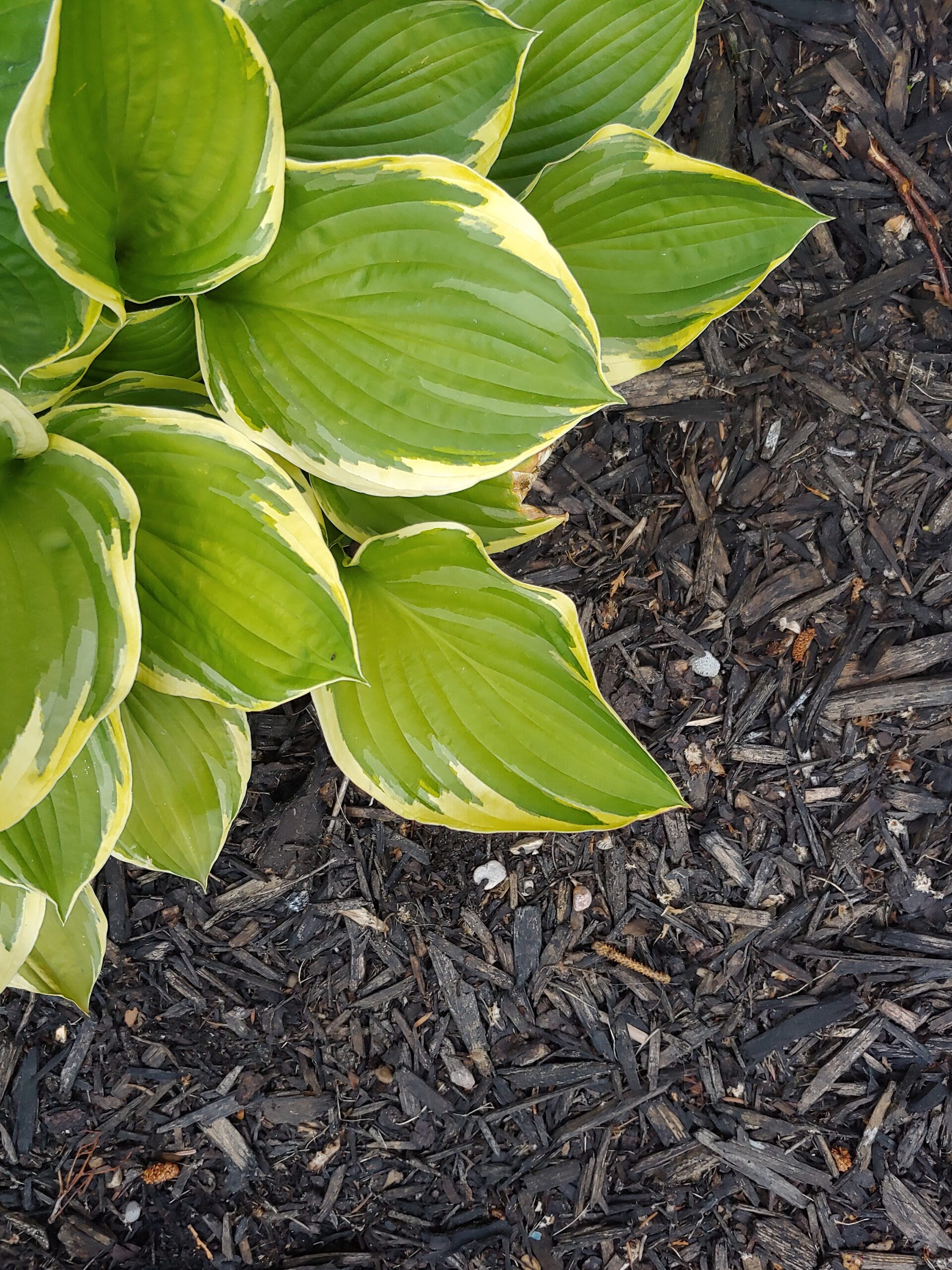
Common Questions About Mulching
Hurray! You’re committed to using mulch in your landscape or garden. Here’s what you still might be wondering…
Can I lay mulch directly over my weeds?
In short–yes. However, applying a barrier such as newspaper, cardboard, or landscape fabric is much more effective.
Do I really need FOUR inches of mulch?
Four inches does seem like a lot of mulch, but you really do need that much. The only exception to this rule is when you are landscaping, and you get close to a plant. In that case, you should reduce it to two inches at the base.
Where are the best places to get mulch?
- free from your city–not every city has this, but a surprising amount do
- big box centres if you just have a small area
- landscaping stores if you need larger amounts
- your own yard– either by raking leaves in the fall and saving them in bags or mowing your lawn and saving the grass clippings
NOTE: If you get grass clippings or straw from a friend or family member’s yard, you have to be very careful there were no herbicides used on that material to avoid killing your flowers and vegetables.
When should I add mulch?
You can add mulch at any time of the year as long as any plants in the area you want to mulch are visible. A height of at least four inches is best.
Is it really as low maintenance as it sounds?
Pretty much! You’ll still have to pick out the odd weed or blade of grass, but it will come out easily.
How long does mulch last?
Unless you’re using rock or plastic “wood” chips, your mulch will decompose over time. Expect to top up mulches made with grass or paper at least once a season, soft wood mulches every 2-3 years, and cedar mulch every 5-8 years.
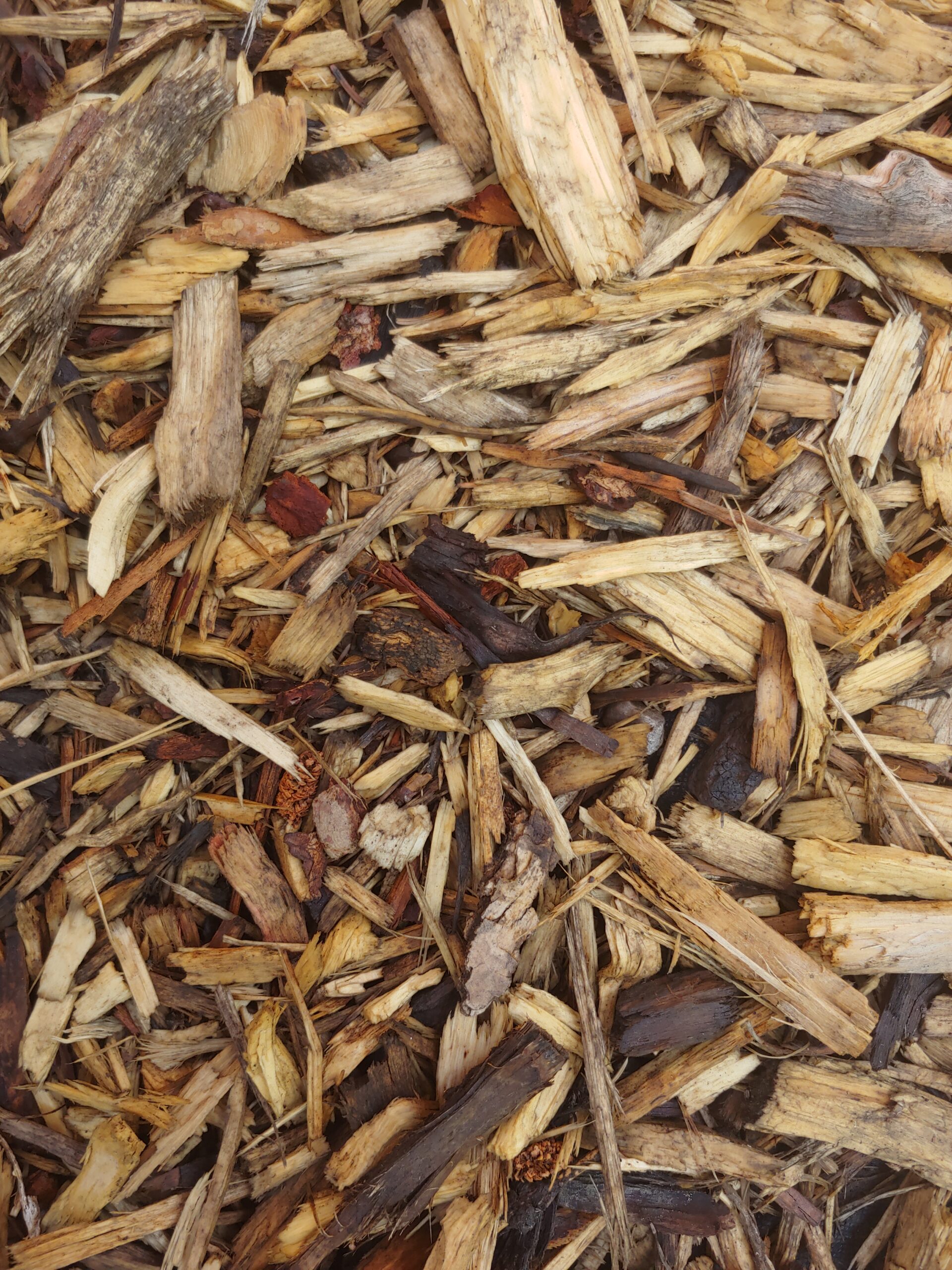
Will you use mulch in your garden? Where will you use it, and what kind will you choose?
If you liked this blog post, find me on Facebook, TikTok, and Instagram for more cold-climate vegetable gardening tips, delicious recipes, and cut flower goodness! I also make weekly videos over on my YouTube channel. I hope to see you there!
P.S. If you love the content I create for Shifting Roots, consider joining our community on Patreon. Your support means the world to me and I am grateful for each and every one of you!
WISH YOU COULD WEED WITH CONFIDENCE, KNOWING YOU WEREN’T ACCIDENTALLY PULLING OUT YOUR ENTIRE GARDEN?
Weeds vs. Plants is a visual guide that will help you quickly identify the most common vegetables and flowers at the beginning stages, so you know exactly what to keep and can pull everything else. No more guessing!

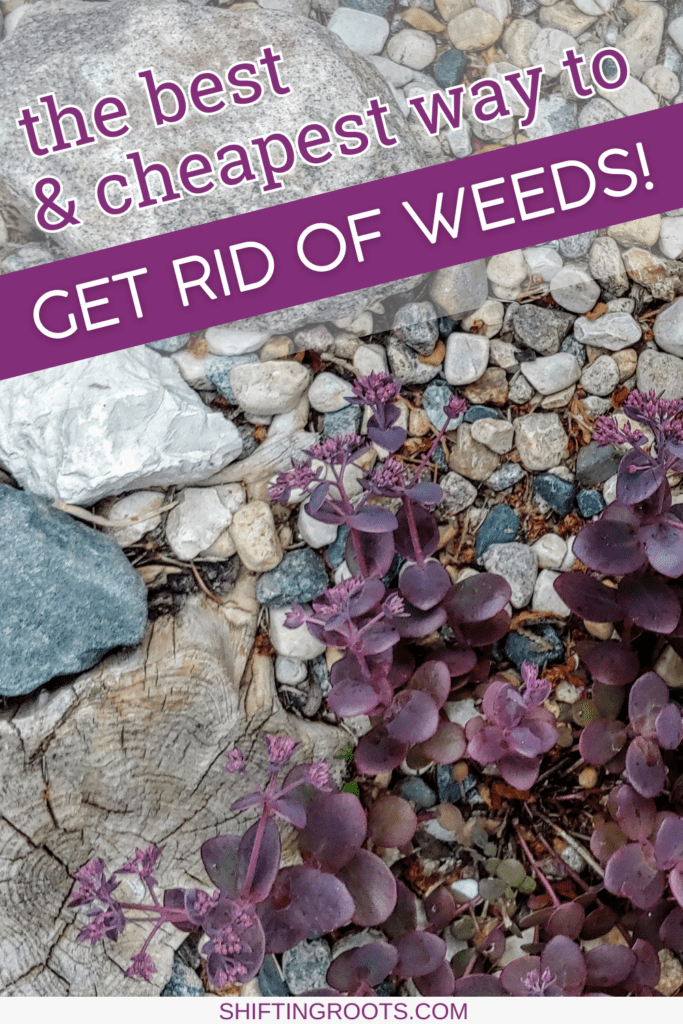
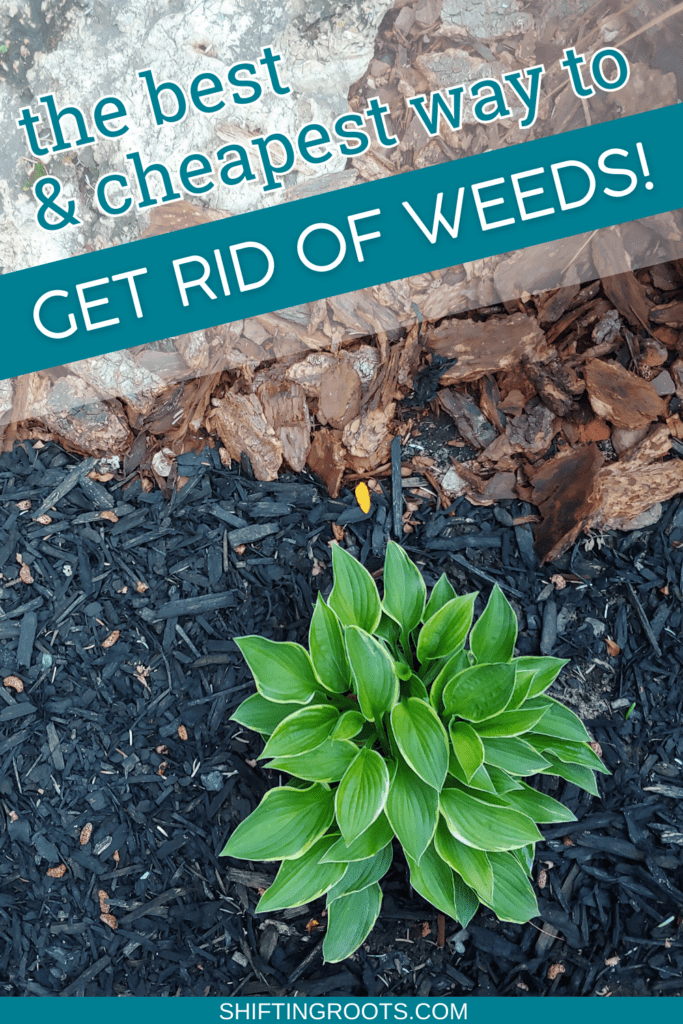
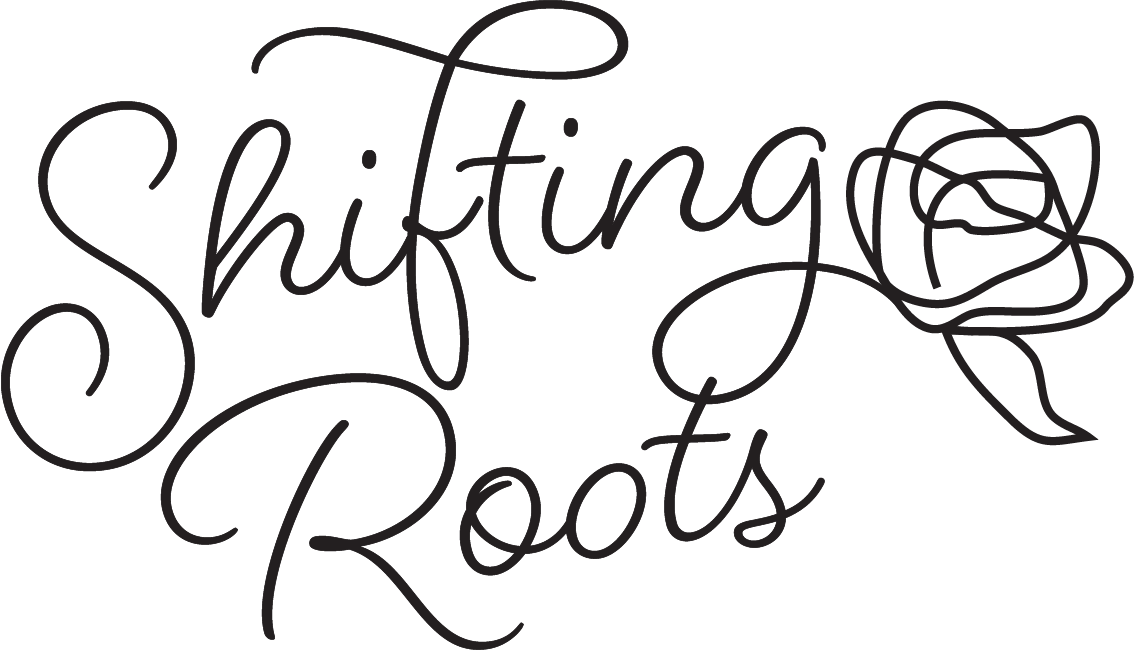
Kim
Kristen Raney
Evelise
Kristen Raney
cecile
Michael Briansky
Elisabeth